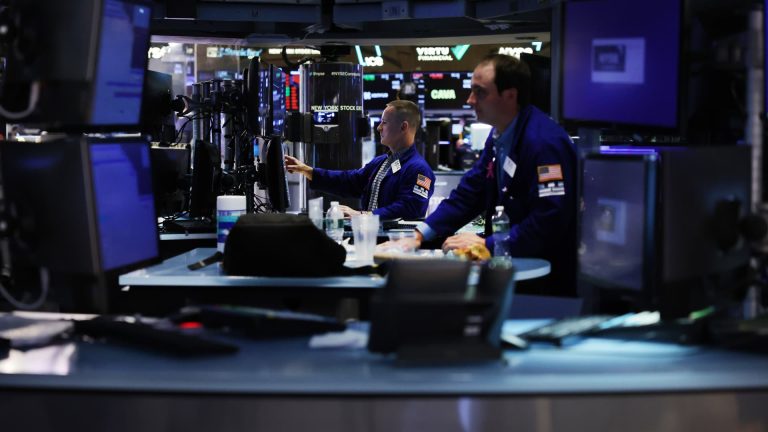Here’s our Club Mailbag email [email protected] — so you send your questions directly to Jim Cramer and his team of analysts. We can’t offer personal investing advice. We will only consider more general questions about the investment process or stocks in the portfolio or related industries. Question 1: Over the years, I’ve heard advisors like Jim Cramer and Warren Buffett say to do a base investment in S & P 500 index fund, but there are so many under that moniker. Are you referring to the S & P index itself, or one of the variations, and which symbol(s)? Thanks, Doug W. There are many exchange-traded funds (ETFs) that track the S & P 500 . The top three by assets under management, in order from largest to smallest, would be the State Street Global Advisors’ SPDR S & P 500 ETF Trust (SPY) , BlackRock’s iShares Core S & P 500 ETF (IVV) , and the Vanguard S & P 500 ETF (VOO) . As mentioned in the question, there are lots of ETFs that track the S & P 500, so by no means are these three the only games in town. There are, however, some differences to consider. The IVV and VOO both sport expense ratios of 0.03% (meaning you’ll pay about $3 per year for every $10,000 invested). The SPY has an expense ratio of 0.945% (meaning you’ll pay just over $9.45 per year for every $10,000 invested). That may not be a lot of money, but it is more than three times more, so it’s something to be aware of, especially if you’re looking to invest larger sums of money in these vehicles. With that in mind, you do get something for the added expense ratio in the SPY — increased liquidity. If you’re a more active investor this is something to consider. The SPY tends to have a lower bid-ask spread than both IVV and VOO and the spread remains much tighter when volatility strikes. For those unfamiliar with what that means, the bid-ask spread refers to the difference between what buyers are willing to pay (the bid) and what sellers are willing to accept (the ask). Because a sale can only be made when a bid is matched to an equal ask, the wider the spread, the less liquid the investment. For most investors, especially passive ones, the difference in liquidity between these three products is so minimal that you likely won’t even recognize the difference. However, for large institutions that need to move large sums of money in and out as fast as possible, it’s a major consideration as pennies per share can amount to hundreds of thousands of dollars per year. It is for that reason that SPY can trade with a high expense ratio. It’s really geared toward large, active money managers. Those are some of the major differences that investors should consider. And, remember, Jim Cramer’s Charitable Trust , the portfolio we use for the Club, owns only individual stocks and cash. Additional detail on the differences in the structure of these products and what it means for investors can be found here . Question 2: I’m confused about after-hours trading. Let’s say there is a stock that is going down after hours and I want to buy it. But I have heard Jim (and my husband) say, just wait until after it opens before you make a trade. (Hubbie says it might go lower, etc.) Please explain “after-hours trading.” And, is this something I can participate in? Or is this just for special traders. Thank you for all you do! Reneta Anyone can participate in premarket or after-hours trading. It may require broker authorization but it is available to everyone. That said, just because you can do it, doesn’t always mean you should. The reason we caution against premarket or after-hours trading is because of liquidity. There are far fewer market participants taking action outside of the stock market’s regular hours of 9:30 a.m. ET to 4 p.m. ET. When liquidity is low, bid-ask spreads can widen significantly. This can be addressed with limit orders where you determine the maximum you are willing to pay or the minimum at which you are willing to sell. Here’s a past mailbag that explains some of the different orders can you place for stock purchases. For the Club, we stick with market orders for all our trades to get the best possible prices. However, that’s not the only reason to be wary of trading outside of regular hours. Liquidity dries up after hours because fewer participants mean less volume. Volume is simply a measure of how many shares are trading. Many consider volume to be the “lie detector” when it comes to trading. If we think about every trade made in the market as a “vote” on what the correct price is, then we realize that true price discovery requires many “votes” from market participants — the more the better. A move made on low volume day is not going to be as reflective of broad market sentiment as a move made on high volume because we’re not getting as many “votes” on what the right price is. Of course, you may have a fundamental view of the stock and decide the price/valuation is right, in which case you may consider placing a trade outside of normal trading hours. However, you must be very wary of trying to look at the price action and use that to determine where the stock will go next. It’s why we so often see moves made outside of regular reverse once the market opens. The low volume and wide bid-ask spreads result in unnatural moves as the money needed to move a stock in the off hours is far less than the money needed to move a stock during the regular session. Less total “votes” means that each individual vote carries that much more weight. Remember, large money managers need liquidity to move in and out of stocks. The larger the trade the more liquidity is needed so as not to move the stock against your interests. You don’t want your selling to crush the stock before you can get all the shares off the book. By the same token, you don’t want your buying to pump the stock before you complete your purchase. So, it’s important not to look at after-hours moves and think it’s always the smart money making those trades, it may very well be a bunch of pajama traders, as Jim calls them, with nothing better to do. Volume usually does pick up outside of normal trading hours when an event takes place, such as an earnings release. So it may be tempting to look at the price action for information. But how many times have we seen a stock move one way on a release only to completely reverse once the market opens for the regular session? In the end, we simply think that the risk/reward of trading during off hours is far less favorable than waiting for the market to open and getting a real picture of the price discovery process in action. (See here for a full list of the stocks INJim Cramer’s Charitable Trust.) As a subscriber to the CNBC Investing Club with Jim Cramer, you will receive a trade alert before Jim makes a trade. Jim waits 45 minutes after sending a trade alert before buying or selling a stock in his charitable trust’s portfolio. If Jim has talked about a stock on CNBC TV, he waits 72 hours after issuing the trade alert before executing the trade. THE ABOVE INVESTING CLUB INFORMATION IS SUBJECT TO OUR TERMS AND CONDITIONS AND PRIVACY POLICY , TOGETHER WITH OUR DISCLAIMER . NO FIDUCIARY OBLIGATION OR DUTY EXISTS, OR IS CREATED, BY VIRTUE OF YOUR RECEIPT OF ANY INFORMATION PROVIDED IN CONNECTION WITH THE INVESTING CLUB. NO SPECIFIC OUTCOME OR PROFIT IS GUARANTEED.
Here’s our Club Mailbag email [email protected] — so you send your questions directly to Jim Cramer and his team of analysts. We can’t offer personal investing advice. We will only consider more general questions about the investment process or stocks in the portfolio or related industries.
Question 1: Over the years, I’ve heard advisors like Jim Cramer and Warren Buffett say to do a base investment in S&P 500 index fund, but there are so many under that moniker. Are you referring to the S&P index itself, or one of the variations, and which symbol(s)? Thanks, Doug W.
Read the full article here









